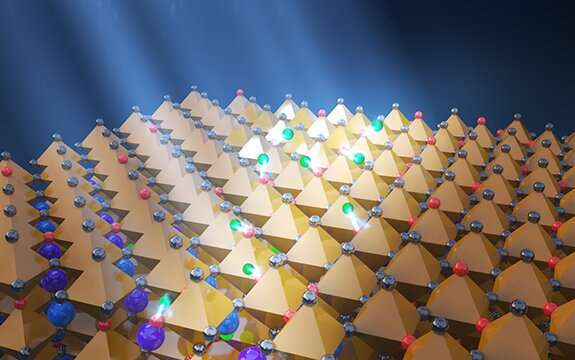How 'doping' boosts next-gen solar cells towards commercialisation

An international team of researchers has brought a new generation of solar cells a step closer to commercialisation, by showing how sunlight can trigger a 'healing process' in the cells to improve their efficiency and stability.
The new research—led by Swinburne in collaboration with Wuhan University of Technology in China, the University of Melbourne, and the University of Adelaide—shows how 'doping' the cells with a performance enhancing chemical, that is triggered by sunlight, improves their stability, making them a better prospect for commercialisation.
The new type of solar cells, known as perovskite solar cells, are already more efficient than current commercially available solar cell technologies, but they have some issues that are limiting their broad use.
The crystals that make up the cells have defects, known as traps, which lowers their efficiency and they also suffer from instability in sunlight, a big problem for a solar cell.
Scientists have overcome these issues by 'doping' the solar cells with potassium to enhance their performance. Scientists knew the doping worked, but until now they didn't know how or why.
This new research shows how this 'doping' allows sunlight to trigger a healing process, getting rid of the defects and also improving the stability of the cells.
"Sunlight becomes a trigger for the positive formation of potassium bromide-like compounds, eliminating the interface traps and stabilising the mobile ions, thus resulting in improved power conversion efficiency," says author Dr. Weijian Chen, an early career researcher at Swinburne.
"This research contributes to the rationalisation of the improved performance and guides future design protocol of better solar cells." Dr. Xiaoming Wen, senior research fellow at Swinburne, adds.
More information: Fei Zheng et al. Triggering the Passivation Effect of Potassium Doping in Mixed‐Cation Mixed‐Halide Perovskite by Light Illumination, Advanced Energy Materials (2019). DOI: 10.1002/aenm.201901016
Journal information: Advanced Energy Materials
Provided by Swinburne University of Technology





















